baibaz/iStock/GettyImages
When you need a thick and robust soup or stew to feed the gang, you have several options for thickening the broth. Cooking south of the border fare may benefit from a light corn flavor added to the other ingredients. Masa harina and fine corn meal both come from dried corn, making them suitable choices for thickening.
Masa Harina
Masa harina comes from dried hominy, which is a corn product. Hominy results after corn soaks in boiling water and lye. After removing the kernels from the hulls, they must soak in water and wood ash until they become puffy. The puffy corn kernels are hominy. After the hominy dries, it can then be ground into a fine powder called masa harina. Cooks use masa harina for making tortillas as well as thickening soups and sauces.
Fine Corn Meal
Corn meal can have a variety of different textures and consistencies. The coarsest corn meal may have granules as large as coarse salt. The finest corn meal may resemble fine flour. Corn meal might be stone ground for added flavor and texture or it might be machine ground. Some cooks like to use freshly ground corn meal to thicken sauces and soups, appreciating the enhanced flavor that comes from fresh grinding.
Corn Flour and Starch
Corn flour comes from finely milled yellow corn. The difference between fine corn meal and corn flour is the texture and consistency of the grinding. Corn flour is still whole-grain corn, but ground finer than even fine corn meal. Cornstarch is a purified starch, refined from the pale endosperm of corn kernels. The super-fine consistency of cornstarch makes it a popular ingredient for thickening cooked soups, sauces and desserts, but it thickens much differently from cornmeal or masa harina. It's quicker and has no flavor of its own, but sets to a glossy and thick texture that might not be exactly what you want in a given dish.
Thickening Tips
Make a paste with the masa harina or the fine corn meal before adding it to warm liquids to avoid lumps. Add enough cold water to the masa or corn meal to make a stirrable, thick paste. After stirring the paste until smooth, pour it into chili, soup, stew or savory sauces. Cook and stir the liquid after adding the paste. You should detect thickening within minutes. Mix cornstarch with water before using it to thicken both sweet and savory liquids. Because cornstarch has no flavor, it is better suited for thickening liquids in which you do not want corn flavors, such as custards and puddings.
Related Articles

Nutrition Value of Corn Meal
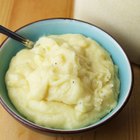
How to Make Cornmeal Polenta

How to Make Corn Soup

Why Is My Boiled Corn Chewy?

Corn Starch Vs. Rice Flour As ...

Quaker Oats Instant Grits: Nutritional ...
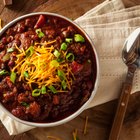
How to Thicken Chili with Cornmeal

How to Cook Couscous With Chicken Broth

What Are Yellow Grits?
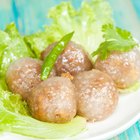
How to Cook Tapioca Balls
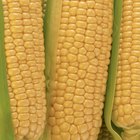
How to Roast Frozen Corn With Olive Oil
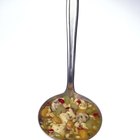
How to Cook Pearl Barley on the Stove

Can I Coat Chicken Wings in Cornstarch ...
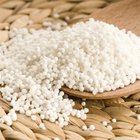
What Is the Nutritional Value of ...
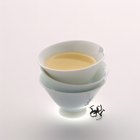
Substitute for Vanilla Custard Powder

Can You Make Dumplings With Corn Starch?

Is Corn Flour Considered Whole Grain?

Can You Use Matzo Flour to Thicken ...

What Is Indian Flatbread Called?

Does It Matter if I Substitute Baking ...
References
Writer Bio
Kathryn Hatter is a veteran home-school educator, as well as an accomplished gardener, quilter, crocheter, cook, decorator and digital graphics creator. As a regular contributor to Natural News, many of Hatter's Internet publications focus on natural health and parenting. Hatter has also had publication on home improvement websites such as Redbeacon.